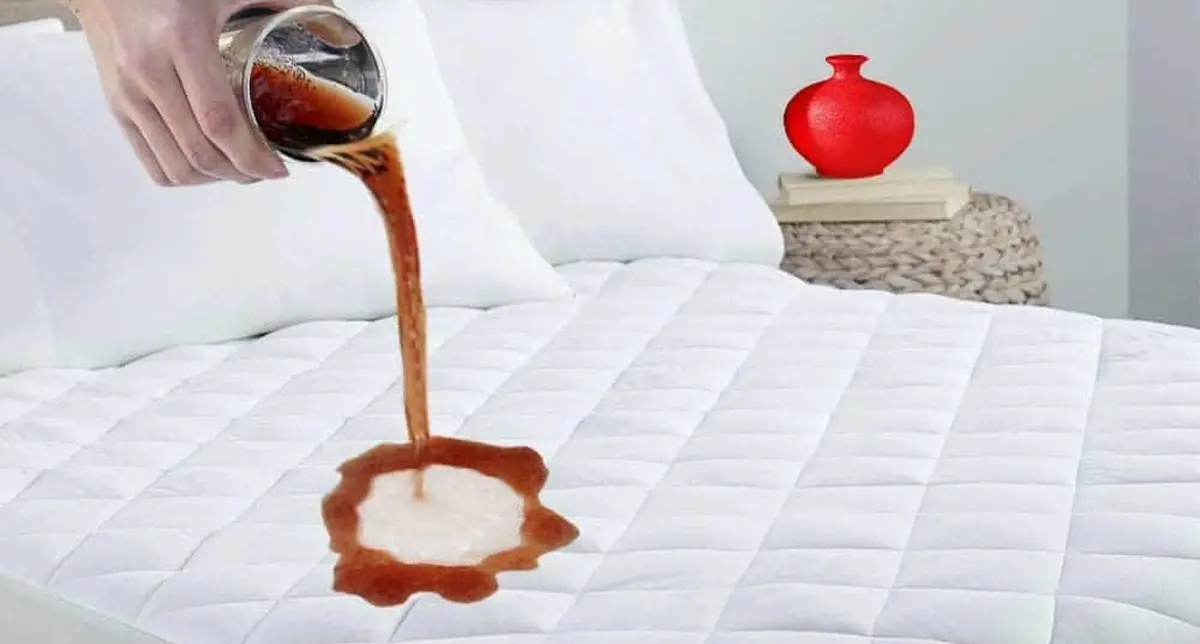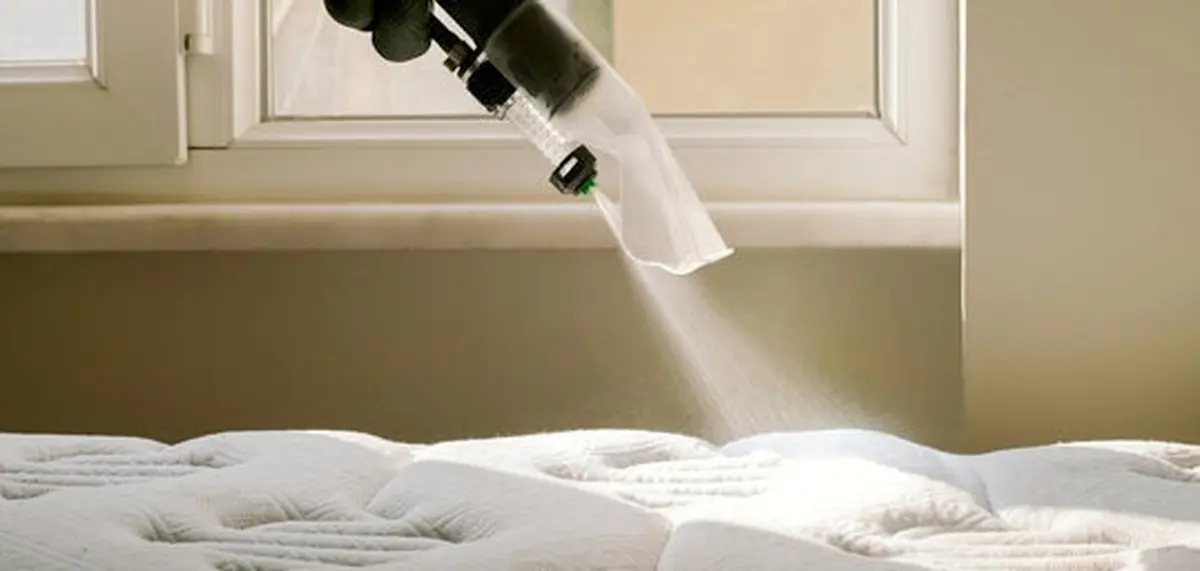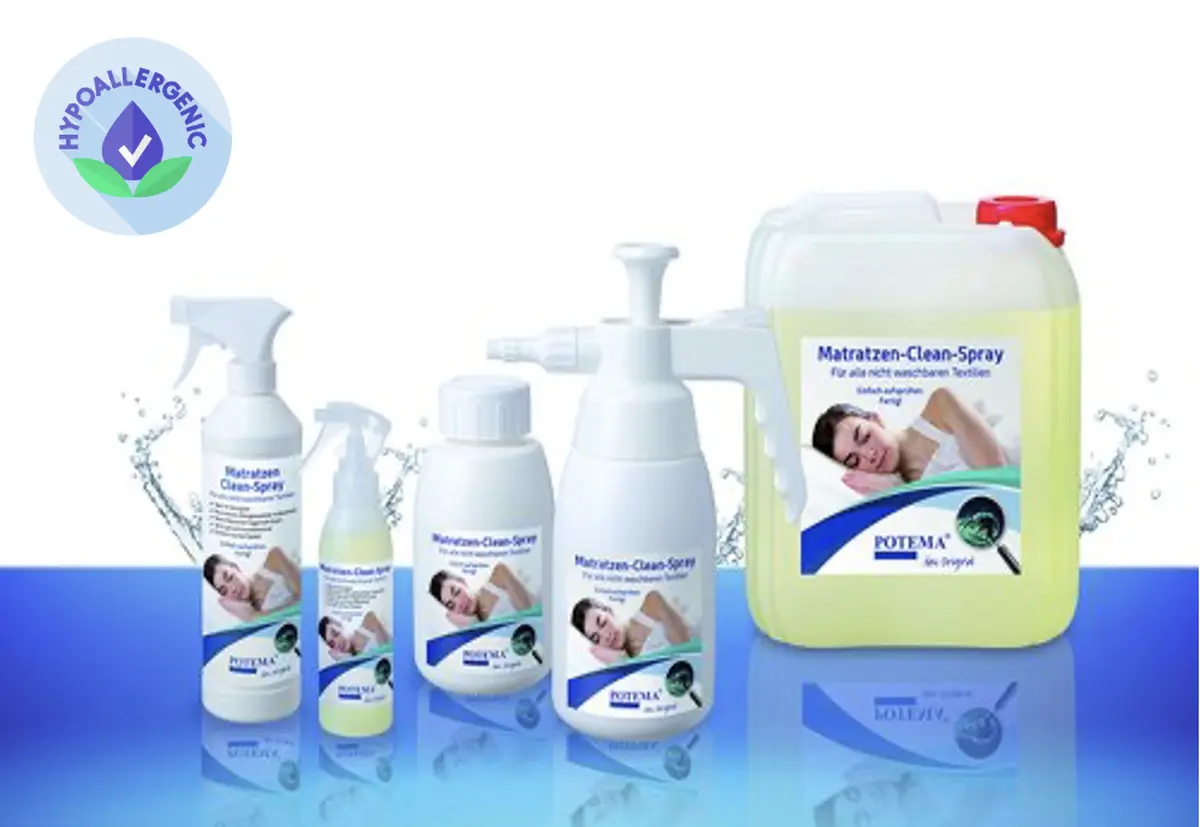Impregnation of mattresses
The Impregnation of a mattress is an integral part of the cornerstone of a good night’s sleep. Proper mattress care can significantly extend the life of your mattress and ensure a hygienic resting environment. One of the key forms of care is mattress impregnation. This process helps protect the mattress from dirt, moisture and microorganisms, helping to keep it in perfect condition for the long term. This text will introduce you to the importance of impregnation, the methods available, recommendations for home and professional use, and answers to frequently asked questions.

The  trade mark POTEMA® defines the branded technology concept of a professionally qualified Carpet Service® implementation company focused on the regular maintenance, cleaning, disinfection, impregnation of synthetic, natural, wool, silk and American-made mattresses, beds and textiles. This branded concept delivers the utmost professionalism in full synergy with maintaining ethical, environmental and quality performance standards, including a contractual guarantee of contractor services.
trade mark POTEMA® defines the branded technology concept of a professionally qualified Carpet Service® implementation company focused on the regular maintenance, cleaning, disinfection, impregnation of synthetic, natural, wool, silk and American-made mattresses, beds and textiles. This branded concept delivers the utmost professionalism in full synergy with maintaining ethical, environmental and quality performance standards, including a contractual guarantee of contractor services.
What is mattress impregnation and why is it important?
Impregnation of a mattress is the process of applying special protective products that create an invisible barrier on the surface of the fabric. This barrier prevents liquids, dust and other impurities from penetrating the mattress structure. The importance of impregnating mattresses lies not only in the protection against dirt, but also in the improvement of hygiene and health of the sleeping environment.
Key benefits of mattress waterproofing:
- Liquid protection: Impregnation prevents the absorption of spilled liquids such as water, coffee or wine, minimizing the risk of permanent stains.
- Prevention of bacteria and mould growth: The barrier created by the impregnation reduces moisture, which is a prerequisite for the growth of microorganisms.
- Mattress life extension: Protects the mattress structure from degradation due to dirt, moisture and mechanical wear.
- Easy maintenance: Impregnated mattresses are easier to clean because dirt remains on the surface and can be easily removed.
Mattress materials and their impregnation requirements
Each mattress material has specific characteristics that need to be taken into account when choosing the appropriate impregnation. While some materials are naturally resistant to moisture, others can be sensitive and require special treatment.
Foam mattresses
Mattresses made of memory foam or cold foam are popular for their comfort, but their open structure is prone to moisture absorption. Special impregnations designed for foam materials help protect their core and maintain their elastic properties.
Spring mattresses
These mattresses contain metal springs that are protected by a layer of fabric or foam. Proper impregnation protects the textile surface from moisture that could cause the springs to corrode.
Latex mattresses
Latex is naturally resistant to dust and microorganisms, but impregnation can increase its resistance to liquids and extend its life.
Natural Materials Mattress
Mattresses made of cotton, wool or coconut require impregnations that are gentle on the natural fibres to maintain their natural breathability and resilience.
What products can be used to impregnate mattresses?
There is a wide range of products available on the market for impregnating textiles and mattresses. These products vary in composition, method of application and effectiveness.
Impregnation sprays
This is the most popular choice for home use. Sprays are easy to apply and ensure even coverage of the mattress surface. Most are water or alcohol based and contain active ingredients that repel water and dirt.
Liquid impregnations
This type of product is suitable for deep protection of mattresses. Liquid impregnation is applied with a sponge or brush and ensures a deeper penetration of the protective layer into the material.
Special products for natural materials
For mattresses made of natural materials, products are available with eco-friendly formulations that protect the fibres without the use of aggressive chemicals.
Antibacterial impregnation
These products contain substances that prevent the growth of bacteria and mould. They are ideal for people with allergies or sensitivity to dust mites.
Step by step mattress impregnation process
 Correct application of the impregnation is key to achieving optimal mattress protection. Here are detailed instructions on how to proceed:
Correct application of the impregnation is key to achieving optimal mattress protection. Here are detailed instructions on how to proceed:
Mattress preparation: It is important to clean the mattress thoroughly before impregnation. Remove dust, crumbs and other dirt using a vacuum cleaner with an upholstery attachment.
Choosing the right product: Choose a waterproofing product that matches your mattress type and your needs (for example, water-repellent or antibacterial).
Impregnation application:
- Spray: Hold the spray at a distance of 20-30 cm from the mattress and apply evenly over the entire surface.
- Fluid product: Using a sponge or brush, apply the impregnation to the surface of the mattress and allow to soak in.
Let dry: Allow the mattress to dry in a well-ventilated area, ideally at room temperature. This process may take several hours, depending on the type of impregnation.
Check: After drying, check that the mattress is evenly protected. If necessary, apply a second coat.
Frequent mistakes when impregnating mattresses
When impregnating mattresses, it’s easy to make mistakes that can affect the results. Here are the most common mistakes to avoid:
- Insufficient cleaning before impregnation: If the mattress is not clean before applying the impregnation, the protective layer will not adhere well enough.
- Too thick a layer of product: Too much impregnation can cause uneven coverage and impair the breathability of the mattress.
- Improper product selection: Using an improper product may damage the mattress material or not provide sufficient protection.
- Ignoring manufacturer’s instructions: Always follow the instructions on the product packaging, especially regarding application method and drying time.
Professional mattress waterproofing
 For those who want to ensure maximum protection for their mattress without the hassle, there are professional impregnation services. These services are offered by specialist companies that use advanced technology and products.
For those who want to ensure maximum protection for their mattress without the hassle, there are professional impregnation services. These services are offered by specialist companies that use advanced technology and products.
Benefits of professional impregnation
- Use of highly effective, long-lasting products.
- Application under ideal conditions ensures uniform coverage.
- Possibility to combine impregnation with deep cleaning of the mattress.
How often to repeat the impregnation?
The frequency of impregnation depends on several factors such as the type of mattress, the product used and the level of use. In general, it is advisable to impregnate once or twice a year. If you have young children or pets, more frequent protection may be needed.
Impregnation vs. protective coatings
Impregnation and protective coatings complement each other. The coatings are removable and easily washable, making regular maintenance easier. Impregnation, on the other hand, provides permanent protection directly on the mattress surface. The best solution is a combination of both methods to ensure maximum hygiene and protection.
Mattress impregnation and ecology
When choosing an impregnation product, it is a good idea to consider its environmental impact. Eco-friendly impregnations based on natural substances are kind to nature and to your health. Avoid products containing fluorocarbons (PFCs), which can have a negative impact on the environment.
Impregnation of mattresses is a key step in maintaining their quality, hygiene and comfort. The right product and a thorough application procedure will allow you to protect your mattress from dirt, moisture and microorganisms. Whether you opt for home impregnation or professional services, regular mattress care pays off. Your mattress will serve as the foundation for a long, healthy and comfortable night’s sleep.
Download
Technical sheet POTEMA® (PDF)
Technical sheet VIROBAG® (PDF)